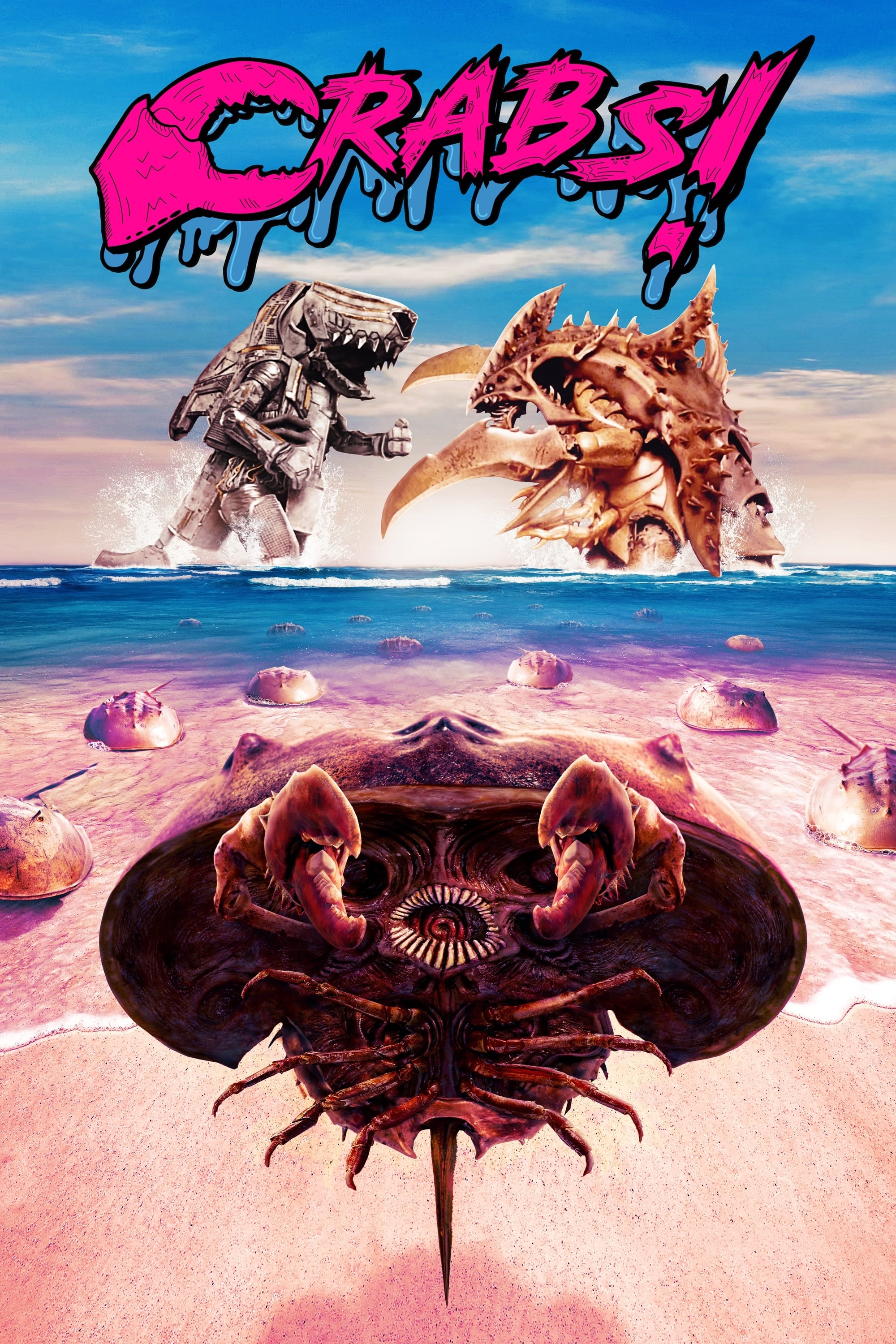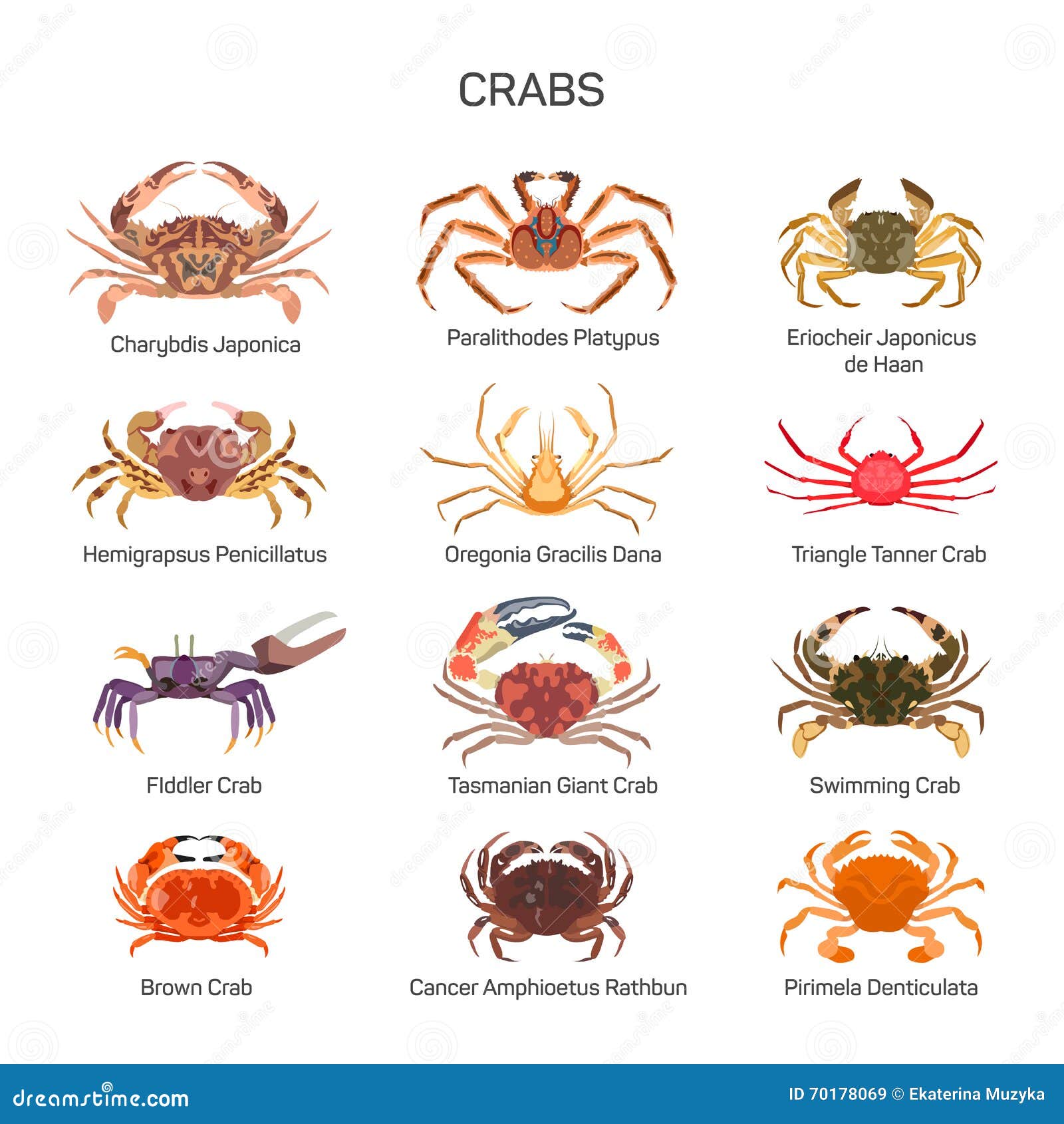Exploring The Fascinating Kinds Of Crabs: A Deep Dive Into Their World
Crabs are some of the most fascinating creatures on the planet. They come in all shapes, sizes, and colors, making them a true marvel of nature. Whether you're a marine enthusiast or just someone curious about the ocean's wonders, learning about the kinds of crabs is an adventure worth taking. From the tiniest hermit crabs to the massive Japanese spider crabs, this world is full of surprises.
Now, why should you care about crabs? Well, aside from being a delicious seafood option, crabs play a vital role in marine ecosystems. They contribute to the balance of life underwater and even on land. Understanding the different kinds of crabs not only broadens your knowledge but also helps in appreciating the diversity of life on Earth.
This article will take you through a journey into the world of crabs. We'll explore their unique characteristics, habitats, and some fun facts that might surprise you. So, buckle up and let's dive into the intriguing world of crabs!
- Lindsay Lee And Matt Rife The Ultimate Love Story You Didnt Know You Needed
- Iggy Azalea Naked The Truth Behind The Controversy And What You Should Know
Table of Contents
- Introduction to Crabs
- Classification of Crabs
- Famous Kinds of Crabs
- Crab Habitats
- Crab Diet
- Importance of Crabs
- Threats to Crabs
- Conservation Efforts
- Fun Facts About Crabs
- Conclusion
Introduction to Crabs
Crabs are decapod crustaceans, meaning they have ten legs. They belong to the infraorder Brachyura and are found in almost every ocean around the world. Crabs can also live in freshwater and even on land, showing their incredible adaptability. They are known for their hard exoskeleton, which protects them from predators and harsh environments.
Crabs are social creatures that often live in large groups. They communicate through various means, such as waving their claws or making clicking sounds. These behaviors help them establish territory, attract mates, and warn others of danger. The diversity of crabs is truly mind-blowing, and we're about to explore some of the most famous kinds of crabs out there.
Classification of Crabs
Crabs are classified based on their physical characteristics, habitats, and behaviors. There are over 4,500 species of crabs worldwide, and they are divided into two main categories: true crabs and pseudo crabs. True crabs have a short, broad abdomen that is tucked underneath their body, while pseudo crabs have a more elongated abdomen.
- Kit Culkin The Rising Star Of The Culkin Dynasty
- Sabrina Carpenter Nude Pictures Debunking Myths And Understanding The Real Story
Some crabs are further classified based on their size, with species like the Japanese spider crab being one of the largest and the pea crab being one of the smallest. Each classification brings its own set of unique features and adaptations, making the study of crabs a fascinating field.
Famous Kinds of Crabs
Blue Crab
The blue crab, scientifically known as Callinectes sapidus, is native to the western Atlantic Ocean. It's famous for its bright blue claws and delicious meat. Blue crabs are a staple in many seafood dishes, particularly in regions like Maryland, USA. They are also important for commercial fishing and play a crucial role in maintaining the health of estuaries.
Blue crabs are highly adaptable and can thrive in both fresh and saltwater environments. They are omnivores, feeding on small fish, plants, and detritus. Their population is closely monitored due to overfishing concerns, and conservation efforts are in place to ensure their survival.
Hermit Crab
Hermit crabs are a unique group of crabs that lack a hard exoskeleton to protect their abdomen. Instead, they use empty seashells as mobile homes, moving to larger shells as they grow. Hermit crabs are found in both marine and terrestrial environments, with some species even becoming popular pets.
These crabs are known for their quirky behavior and social interactions. They often form "shell swapping parties" where multiple crabs gather to exchange shells. Hermit crabs are vital for ecosystems as they help clean up debris and recycle nutrients.
Spider Crab
Spider crabs, particularly the Japanese spider crab, are some of the largest arthropods in the world. They can grow up to 12 feet in leg span and live for over 100 years. These crabs are named for their long, spindly legs, which resemble those of a spider.
Despite their intimidating appearance, spider crabs are gentle creatures that feed on algae and small organisms. They are often found in deep waters and are a symbol of longevity and resilience in Japanese culture. Conservation efforts are underway to protect these majestic creatures from habitat destruction and overfishing.
Crab Habitats
Crabs can be found in a variety of habitats, from the depths of the ocean to the sandy beaches of tropical islands. Marine crabs typically live in coral reefs, seagrass beds, and rocky shores, where they find food and shelter. Freshwater crabs, on the other hand, inhabit rivers, lakes, and streams, adapting to the changing water conditions.
Land crabs, such as the coconut crab, have evolved to live entirely on land. They dig burrows in the soil and come out at night to forage for food. Some land crabs even climb trees to feed on fruits and nuts. The adaptability of crabs to different environments is a testament to their survival skills.
Crab Diet
Crabs are opportunistic feeders, meaning they eat whatever they can find. Their diet varies depending on the species and their habitat. Marine crabs often feed on algae, plankton, and small fish, while freshwater crabs consume plants, insects, and detritus.
Land crabs have a more diverse diet, including fruits, nuts, and even carrion. Some species, like the coconut crab, are known to crack open coconuts with their powerful claws. This adaptability in diet allows crabs to thrive in different environments and maintain their population.
Importance of Crabs
Crabs play a crucial role in marine and freshwater ecosystems. They help maintain the balance of life by controlling the population of smaller organisms and recycling nutrients. Crabs are also an important food source for many animals, including fish, birds, and humans.
In addition to their ecological importance, crabs have cultural significance in many societies. They are celebrated in festivals, featured in art, and used in traditional medicine. The economic value of crabs is immense, with industries like fishing and aquaculture relying heavily on these creatures.
Threats to Crabs
Despite their resilience, crabs face numerous threats in the wild. Overfishing is one of the biggest concerns, as many crab populations are being depleted faster than they can reproduce. Habitat destruction, pollution, and climate change also pose significant risks to their survival.
Invasive species can disrupt the natural balance of ecosystems, competing with native crabs for resources. Diseases and parasites are another threat, affecting both wild and farmed crabs. Addressing these challenges requires a concerted effort from governments, scientists, and the public.
Conservation Efforts
Conservation efforts for crabs are underway worldwide, focusing on protecting their habitats and managing their populations sustainably. Marine protected areas have been established to safeguard coral reefs and other critical habitats. Fishing regulations, such as size limits and seasonal closures, help prevent overfishing.
Research is being conducted to better understand the biology and behavior of crabs, which can inform conservation strategies. Public awareness campaigns educate people about the importance of crabs and how they can help protect them. By working together, we can ensure that future generations will continue to marvel at the kinds of crabs.
Fun Facts About Crabs
- Crabs can regenerate lost limbs, a process called autotomy.
- The fiddler crab has one claw much larger than the other, used for attracting mates and fighting rivals.
- Crabs can communicate through vibrations and sound waves, which they detect using special sensors on their legs.
- Some crabs have a symbiotic relationship with sea anemones, which attach to their shells for protection.
- Crabs can live for several decades, with some species reaching over 50 years of age.
Conclusion
The world of crabs is incredibly diverse and full of wonders. From the tiny hermit crabs to the massive spider crabs, each species has its own unique characteristics and adaptations. Understanding the kinds of crabs not only enriches our knowledge but also highlights the importance of conserving these amazing creatures.
We encourage you to share this article with your friends and family, spreading awareness about the fascinating world of crabs. If you have any questions or comments, feel free to leave them below. And don't forget to explore more articles on our site for all things nature and wildlife!



Detail Author:
- Name : Ellen Gulgowski
- Username : lkohler
- Email : gbashirian@hotmail.com
- Birthdate : 2007-03-18
- Address : 42374 Don Villages New Wilbert, MS 37894
- Phone : 619-216-6025
- Company : Little, Dibbert and Rohan
- Job : Gas Appliance Repairer
- Bio : Officiis deserunt soluta facilis soluta repellendus modi expedita. Fugiat quidem labore quo dolores eum inventore. Itaque soluta exercitationem voluptas quidem.
Socials
facebook:
- url : https://facebook.com/jacinthedibbert
- username : jacinthedibbert
- bio : Est recusandae non sed eos neque. Ut ex quaerat officiis.
- followers : 1581
- following : 20
instagram:
- url : https://instagram.com/jacinthe2325
- username : jacinthe2325
- bio : Provident fugit dolorum enim voluptate. Ut mollitia ut non et voluptas vel fuga.
- followers : 4307
- following : 281
twitter:
- url : https://twitter.com/jacinthe9977
- username : jacinthe9977
- bio : Ex corrupti eum id qui nihil dignissimos. Omnis vero omnis ex quia sit et. Est aperiam cum ut fuga. Pariatur velit hic omnis et mollitia ipsa voluptatem.
- followers : 2071
- following : 2459
linkedin:
- url : https://linkedin.com/in/jacinthe_dibbert
- username : jacinthe_dibbert
- bio : Sit tenetur soluta dolores nam non deleniti.
- followers : 5422
- following : 745
tiktok:
- url : https://tiktok.com/@jdibbert
- username : jdibbert
- bio : Vero qui quo deserunt mollitia et. Non delectus qui expedita modi.
- followers : 2837
- following : 922